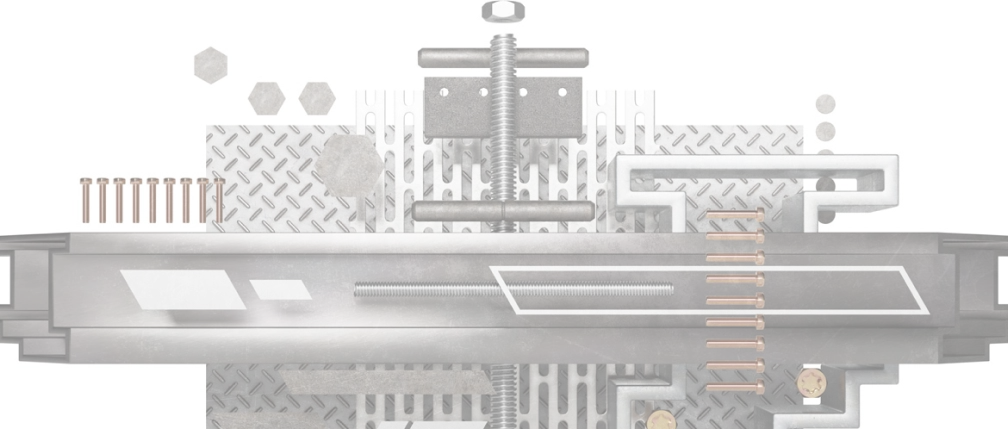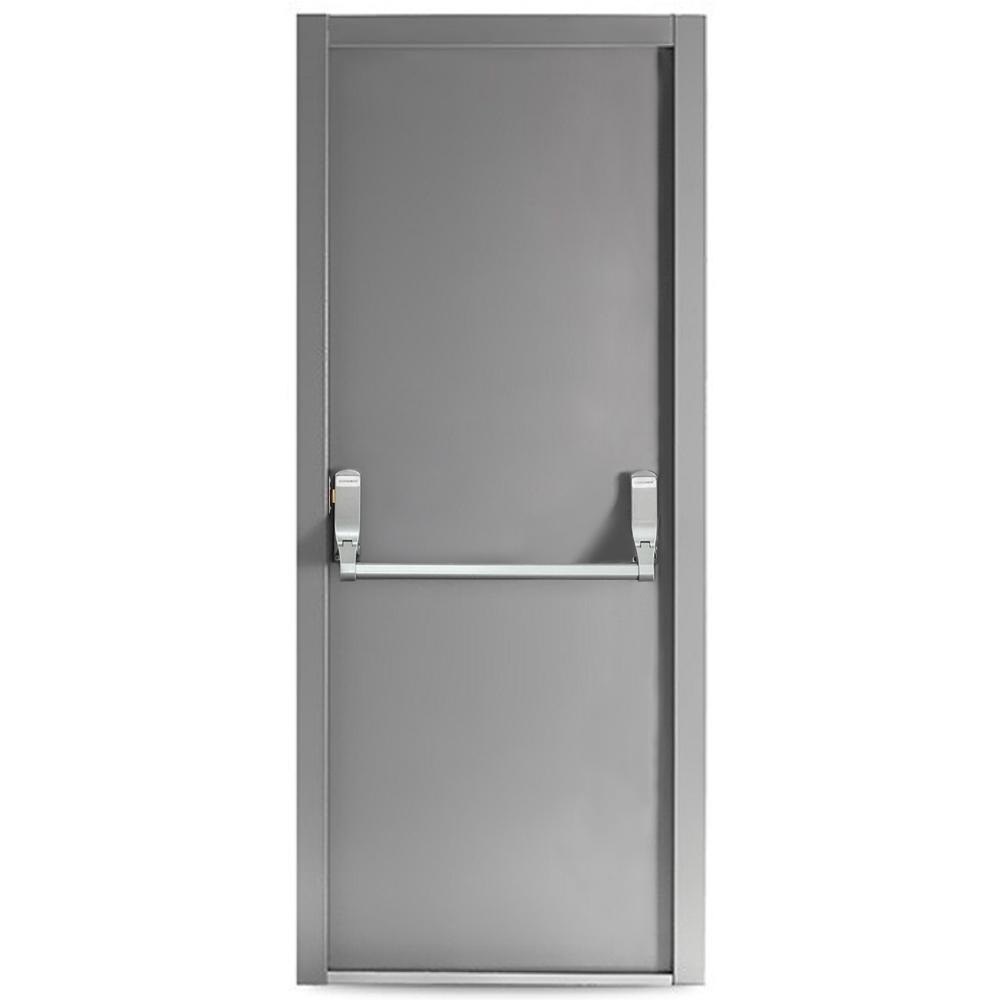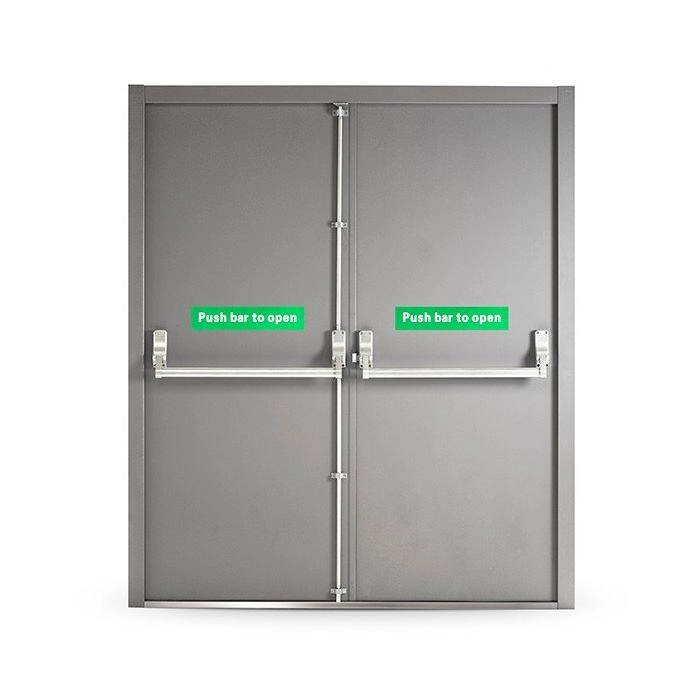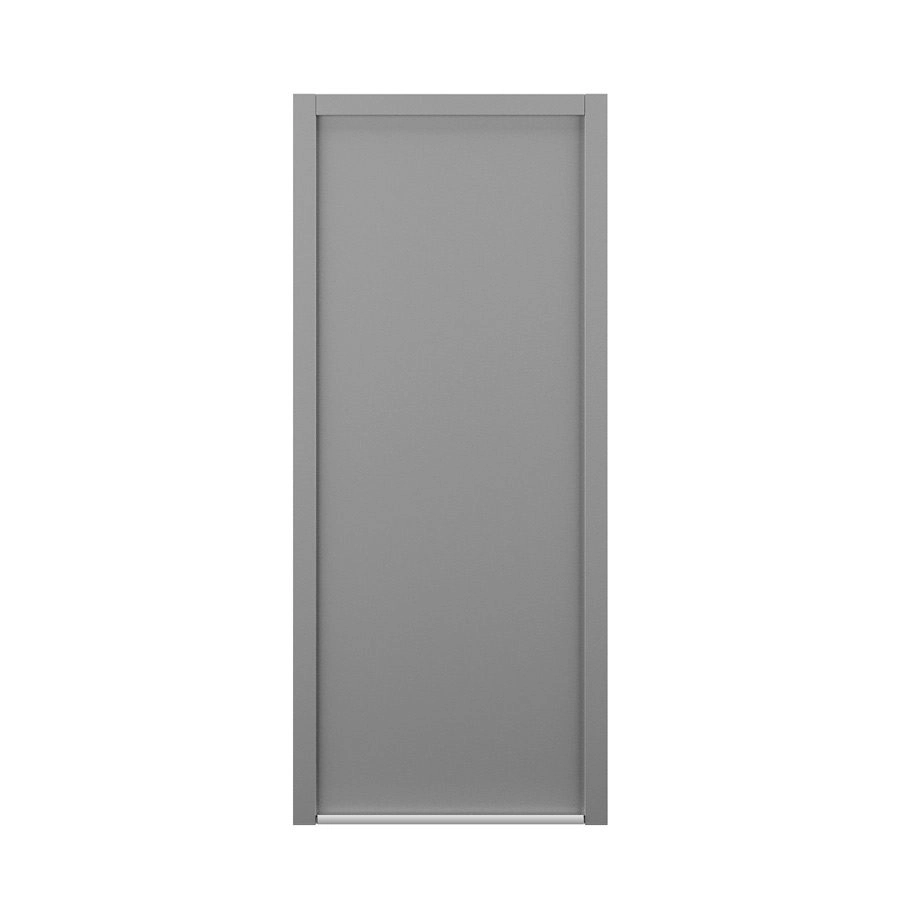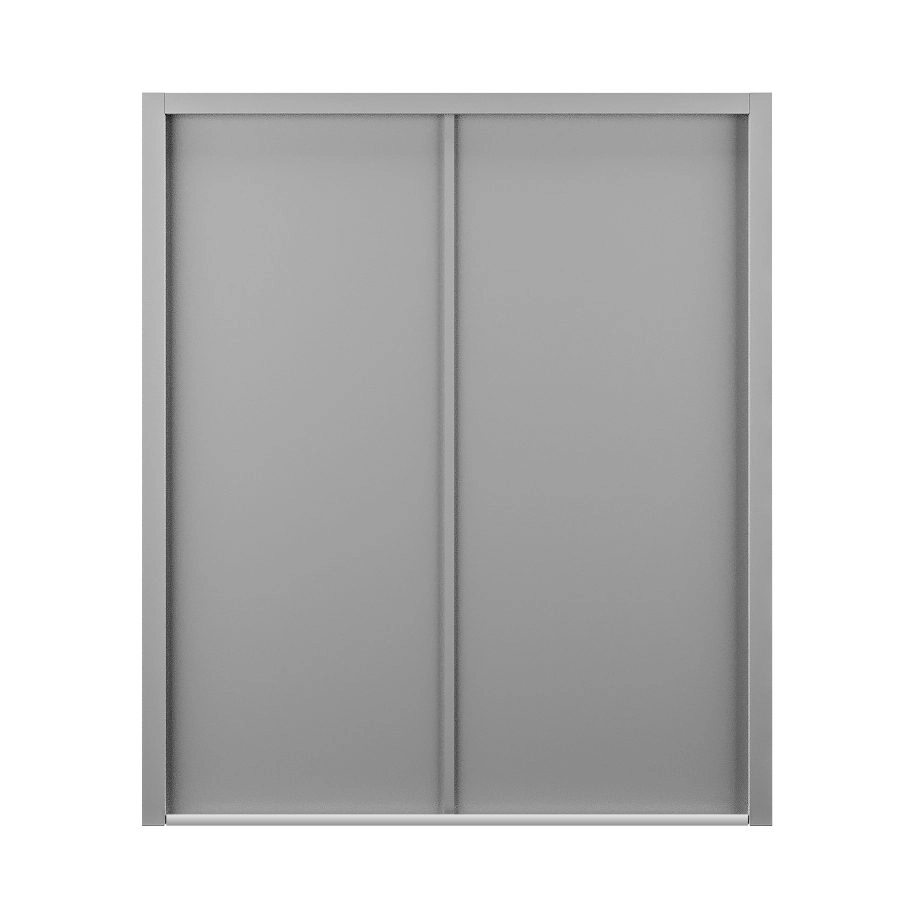Fire Exit Doors
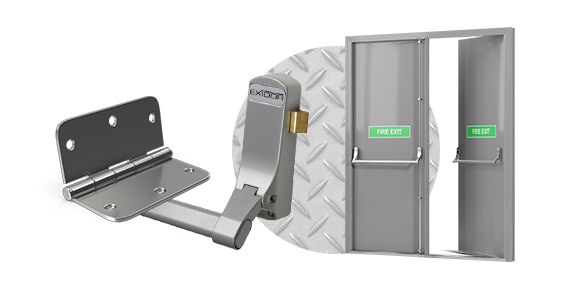
Showing 4 products
Fire Exit Door With Panic Bar (Single)
- Full weather seal on 4 sides
- 1/16″ frame with inbuilt steel strengthening
- Includes frame, hinges, panic hardware and low threshold
Price range: $1,089.99 through $1,129.99
In StockShipping to mainland US Included
$250 Rebate for Connecticut pickup
Fire Exit Door With Panic Bar (Double)
- CE Rated Double Panic bars
- 8 heavy duty lift off hinges
- Includes frame, hinges and low threshold
$1,639.90
In StockShipping to mainland US Included
$250 Rebate for Connecticut pickup

Fire Exit Door Without Panic Bar (Single)
- 2″ thick door leaf filled with fiberglass/mineral wool
- Hinged on left or right
- Includes frame, hinges, panic hardware and low threshold
Price range: $929.00 through $1,055.00
In StockShipping to mainland US Included
$250 Rebate for Connecticut pickup
Fire Exit Door Without Panic Bar (Double)
- Comes with Shoot/Flush bolts on the inactive leaf
- Anti-jimmy hinge bolts
- Includes frame, hinges and low threshold
$1,539.90
In StockShipping to mainland US Included
$250 Rebate for Connecticut pickup
FAQ's
A fire door can be used as an entrance, so long as it is fitted with the correct equipment. Typically a fire exit is used with a panic bar on the inside for exit and is level with the outside. This means that in order to still maintain the security of your door and use it as an entrance then you will need to install a form of exterior access control. These can take the form of knobs or handles and allow secure access using a key via a fire exit door.
Fire-rated doors are designed to contain fire and smoke. They provide protection and maintain safe evacuation routes for a specified time, while fire exit doors are meant for quick and safe evacuation during an emergency. The two types of doors differ in purpose, regulations and maintenance requirements, with fire-rated doors focusing on fire resistance. Meanwhile fire exit doors ensure fast and accessible escape routes.
You should perform regular inspections on your fire doors every six months to ensure they continue to meet safety standards and provide protection in case of emergency. Regular maintenance should include clearing the area, cleaning and lubricating the door components, inspecting for signs of damage or wear and ensuring that gaps do not exceed safety limits.
For certain types of minor damage to fire doors, the following repair methods can be used:
Minor Surface Damage: This can be rectified by sanding the area lightly, before adding a fire-rated filler or intumescent putty for chips. Refinish with compatible paint or varnish, though any non-intumescent coatings mustn’t interfere with seals or fire ratings. To ensure compliance with regulations, use a fire-door certified repair kit.
Replacing Missing or Damaged Seals: Ensure you have the correct replacement seal type in terms of size, type, and location, as any deviation can make the door non-compliant. Remove the damaged or intumescent smoke seals if they remain and replace with the same size, type, and brand as originally specified. Make sure that the fitting is clean, without any gaps or compression.
Repairing Defects on the Door’s Edges: Fill the problem areas with intumescent-grade filler or timber infill. While this is being done, ensure you are not overplaning the edges, and maintain a clearance of around 4mm. After completing, check that the intumescent or smoke seals on your door have not been affected by any maintenance work.
Replacing or Refixing Loose or Damaged Hardware: Before beginning, make sure that the hardware matches the original fire test or the door manufacturer’s specification. You should also ensure you are using hardware with the correct number of screws if there are any. You should then replace or refix the defective components with other fire rated hardware. Observe the fire door once you have finished and establish it can get to the closed position by itself and that the latch mechanism works appropriately.
If the fire door is warped, twisted, or doesn’t close fully, then the original should be removed and replaced. A fire door should also be changed if there is evidence of previous unapproved repairs, or if the certification for the door has gone missing.
Our certified fire exit doors come in single or double sizes, with the option of adding a panic bar. Suitable for commercial areas, residential areas, and warehouses, they are built specifically to give people time to escape the building and wait for emergency services to arrive. Our complementary security hardware, such as our fire exit handles and locks, ensure full compliance with safety regulations and enhance functionality.
Many house fire begin in the kitchen, so be careful when deep-fat frying or cooking with oil as these can easily catch and spread fire. For electrical items always use the charger that comes with your device, and do not leave hairdryers or straighteners on the bed or carpet. Unplug them after use, and make sure you have a fire alarm installed in your premises, as these are one of the best ways to prevent or mitigate a fire outbreak.
In the United States, fires are split into five classes according to type and how they can be treated.
Class A: This type of fire originates from common combustible materials such as wood, paper,fabric, rubber, and plastic. To fight a Class A fire, water and foam agents are often used.
Class B: A Class B fire is caused by flammable liquids or gases such as alcohol, kerosene, paint, or methane. They are quick to spread and produce a thick black smoke. Carbon dioxide or dry chemical agents are used to fight this type of fire.
Class C: These are fires that have live electrical currents or electrical equipment as a source of fuel. A non-conductive chemical agent such as clean agents should be used to put out the flames.
Class D: Class D fires originate from a combustible metal fuel source, like aluminium, lithium, and magnesium. Dry powder agents can be used to absorb the heat and smother the flames by blocking the fire’s oxygen supply.
Class K: These are cooking fires are started by the combustion of a cooking material like grease, oil, or vegetable fat. They often occur in the food or restaurant industry, but one can break out in any kitchen. Combating a Class K fire requires a wet chemical agent. Water should not be used.
Gyms are required to have fire alarms and smoke detectors installed throughout the facility to provide early warning of a fire. These must be checked regularly to ensure they are functional and can be relied on in an emergency. In addition to this, the correct fire extinguishers should be placed strategically throughout the gym according to which hazard is present, and must also be regularly maintained. Emergency exits should be clearly visible at all times with no obstructions, and placed at multiple points in the gym to ensure all visitors have a safe means of escape. Risk assessments should be carried out of the building, and staff training conducted in which employees are made aware of fire safety plans.
One of the most common causes of fire is faulty electrical equipment. Faulty wiring can lead to sparks, which become fire if they hit combustible materials. Heating equipment can also lead to fire if it is positioned near flammable materials or it accumulates large amounts of dust and debris. Messy workspaces and human error can also lead to a fire, particularly if not enough consideration is given to fire safety and errors are made as a result, such as not handling flammable substances correctly.
A fire rating is the classification of materials by their ability to withstand fire exposure. They also indicate how much smoke is produced during exposure, which is known as the flame spread index. The American Society for Testing and Materials currently recognises the ASTM E84 and the ASTM E119 tests that help measure a material’s fire rating. Similar tests such as those by the NFPA and the Underwriters Laboratories (UL) were also developed to help create national and international standards for building safety.

Our Guarantee
Quality Materials & Quality Construction
You can rest assured that an interior door from Doors4Security is crafted with the highest quality materials and are expertly assembled by our team of highly skilled technicians ensuring high door quality.
